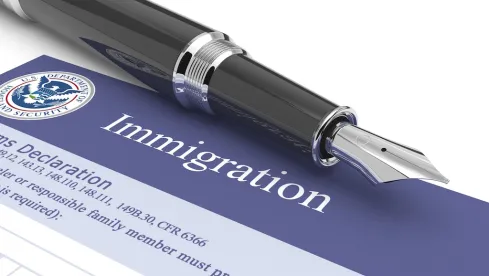As of May 4, 2022, the Department of Homeland Security (DHS) is increasing the automatic extension of work authorization from 180 days to 540 days for certain individuals.
Currently, certain individuals with expiring employment authorization documents (EADs) can continue working for an additional 180 days as long as they have timely submitted for a replacement EAD and have been issued a receipt notice, I-797C, in the same employment eligibility category. Because actual processing times for replacement EADs currently is up to 11.6 months, a significant number of employees are not in receipt of their replacement EADs within the 180-day period and cannot legally continue to work. This DHS rule change, effective May 4, will extend the 180-day period to 540 days from the card expiration date.
Applicants who are already eligible for 180-day extensions also qualify for the new 540-day extension beyond the expiration date of their EADs. The categories include those with pending Adjustment of Status applications, spouses of E, L, and H visa holders (with unexpired Form I-94, Arrival/Departure Records), applicants for asylum, and individuals with Temporary Protected Status who may also be eligible for certain per-country automatic extensions.
To be eligible, applicants must continue to also:
-
Have currently pending EAD renewal applications that were timely filed (even if the individual’s 180-day extension has already expired); or
-
Timely file an EAD renewal application between May 4, 2022, and October 26, 2023.
For those already in an authorization gap, employment authorization will resume on May 4, 2022, and continue up to 540 days from the date the EAD expired. Unfortunately, the new rule does not cure any unauthorized employment that may have accrued prior to May 4, 2022.
After May 4, 2022, to complete a Form I-9 Employment Authorization Verification for someone entitled to the new 540-day extension, the individual must present the receipt notice showing a timely filed EAD renewal in the same category as the expired EAD. DHS will be updating its webpage with information about the 540-day extension. It will recommend that a copy of the webpage be attached to the I-9. If an individual has been terminated because their 180-day extension expired, the employer may do a reverification or a new Form I-9.
In the new rule, DHS outlines all the reasons for the backlogs, including fiscal problems, staffing problems, increases in filings, and the COVID-19 pandemic. DHS says it hopes that, by the time the rule’s provisions expire, processing times will have returned to more normal levels – the agency’s prior 90-day processing goal.





 />i
/>i

